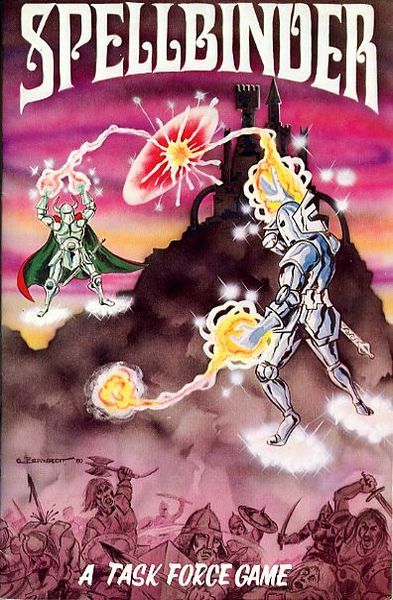Spellbinder (1980) Board Game
Spellbinder is a fantasy wargame released in 1980 by Task Force Games. It was designed by Alvin Belflower, Bob Bingham, and R. Vance Buck. The game features grid movement, hexagon grid, and simulation mechanics, making it an engaging and strategic tabletop experience for 2-4 players.
Game Components of Spellbinder
How To Setup Spellbinder
To set up the game, each player chooses a wizard and places their token in one of the lesser castles at the corners of the board. The central castle, Yof-Pintre, is the main objective. Players receive a set of spell cards and army units according to the scenario being played. The game comes with three scenarios, each with slightly different setup instructions.
Gameplay Mechanics and Game Objective
– All players compete to control Yof-Pintre.
– One player starts in control of Yof-Pintre and must defend it.
– The chief wizard, Yamantsar, returns to fight the lesser wizards.
– A campaign game where all scenarios are played in sequence.
Player Experience
**Spellbinder** offers a simple yet engaging experience, with a focus on strategy and a bit of luck due to the unpredictable nature of magical combat. The game is relatively quick to learn and play, making it accessible to new players. However, some reviewers have noted that the gameplay can become repetitive, with most games revolving around a single large battle for the central castle.
Pros
Cons
Personal Thoughts on Spellbinder
**Spellbinder** is a good fit for those who enjoy light, fantasy-themed strategy games. It’s ideal for casual gamers or those looking for a quick, fun experience. However, players seeking deeper, more complex game mechanics may find **Spellbinder** too simplistic. Despite its limitations, it remains a charming and nostalgic example of the microgame genre from the 1980s.
We are supported by our audience. When you purchase through links on our site, we may earn an affiliate commission, at no extra cost for you. Learn more.

